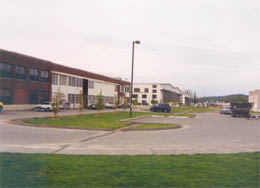On September 18, 1999, the Sand Point Arts and Cultural Exchange (SPACE) adopts a strategic plan for promoting use of Sand Point facilities for the fine and performing arts and other cultural activities.
SPACE grew out of forums sponsored by Allied Arts of Seattle in March 1993, on possible art use of surplus buildings at the former Sand Point Naval Air Station. It incorporated as a non-profit organization in December 1996, under the leadership of Sabrina Prielaida.
SPACE worked closely with the Seattle Arts Commission (SAC) and other groups to identify possible cultural uses and tenants for the Navy's last remaining Sand Point facilities, which were formally conveyed to the City of Seattle in 1997. Most attention has focused on an 800-seat cinema, the 80,000-square-foot Building 30, numerous classrooms and shop areas, and acres of lawns and open space.
The adjacent Magnuson Park, developed from Sand Point property surplused in the 1970s, already houses several major public art works. Since 1997, the expanded Sand Point site has hosted a variety of arts events and performances, including "Horsehead" environmental art installations in 1998 and 1999, and the Theater of Dames in 2000. In late 1999, former SAC director Wendy Ceccherelli took over direction of arts and cultural projects at Sand Point for the Seattle Parks and Recreation Department.

